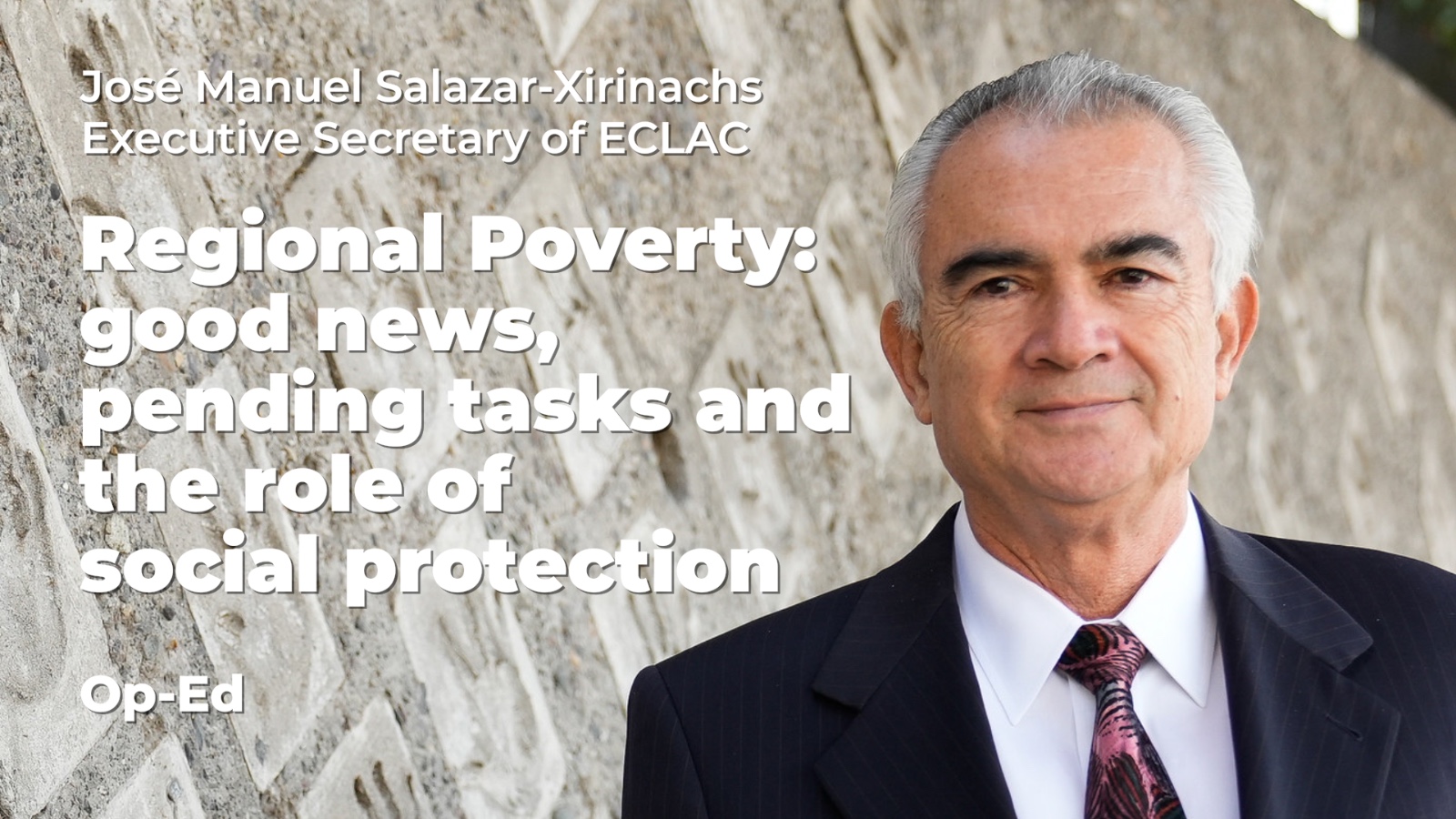Regional Poverty: Good News, Pending Tasks and the Role of Social Protection
By José Manuel Salazar-Xirinachs, Executive Secretary of ECLAC.

In the recent Social Panorama of Latin America and the Caribbean 2024, which ECLAC just published, we confirmed that poverty declined very significantly between 1990 and 2014, dropping from 51.2% to 27.7%. But this decline then came to a halt, coinciding with the start of the second “lost decade,” and poverty rose with the pandemic to 32.8% in 2020. It fell in 2022 to 28.8% and again in 2023 to 27.3%, which is the lowest level seen since comparable records exist. Nonetheless, there are still 172 million people in the region who do not have enough income to cover their basic needs.
Meanwhile, extreme poverty – which had fallen from 15.5% in 1990 to 7.7% in 2014 – also stopped declining as of that year, and rose to 13.2% with the pandemic. It then receded to 11.1% in 2022 and to 10.6% in 2023, which translates into 66 million people who cannot buy a basic food basket.
In addition, the report documents how poverty continues to affect working-age women more than men and how the percentage of children and adolescents living in poverty is considerably higher than that of other age groups.
Meanwhile, income inequality remains high, with no significant changes noted between 2022 and 2023. And, as we have indicated in previous reports, wealth distribution is significantly more unequal than income distribution: 10% of the highest-income people account for 66% of total wealth, and the wealthiest 1% account for 33%.
The focus of this year’s Social Panorama is on non-contributory social protection – an area in which significant progress has been made, but where the lack of protection is still high. In 2022, 1 out of every 4 households (23.5%) lacked access to social protection, either contributory or non-contributory, in 14 Latin American countries. This proportion rises to 1 in 3 households (36.5%) in the lowest-income quintile and in rural areas (29%).
Non-contributory social protection is fundamental in households in the first, lowest-income quintile. This means that policies for cash transfers or in-kind transfers (such as school meals) as well as labor inclusion programs are key for linking people with social services and making headway on eradicating poverty and reducing inequality.
The expansion of non-contributory pension systems (NCPS) has been one of the main milestones in the development of social protection systems in Latin America this century. The coverage of NCPS among people aged 65 and over surged from 3.4% to 31%, or nearly 28 percentage points, while poverty in this same population fell by 14.3 percentage points. The NCPS are a key policy for reducing poverty in old age, making their expansion and their financing a clear priority.
The Social Panorama 2024 asserts the need to establish an investment standard for non-contributory social protection of between 1.5% and 2.5% of GDP, or between 5% and 10% of total public spending, as a precondition for eradicating poverty. In contrast, as of 2022, the Social Development Ministries of 20 Latin American and Caribbean countries spent on average just 0.8% of GDP, or 3% of total public spending, on non-contributory social protection.
In the next 25 years, the population of people aged 65 and over will double, totaling 138 million people by 2050. This will prompt high demand for care that cannot be addressed informally in the heart of families and mainly by women, as occurs today. It is imperative that we further institutionalize care activities using public, private and mixed regimes.
In conclusion, one of the 11 vital transformations in the region’s development models that we at ECLAC have proposed is to move towards universal, comprehensive, sustainable and resilient social protection systems. To that end, we must urgently reinforce the social institutional framework with technical, operational, political and prospective (TOPP) capabilities. The preparations for the Second World Summit for Social Development in 2025 pose an important opportunity to pick up the pace on this transformation and spotlight the region’s progress and challenges in this area on the world stage.